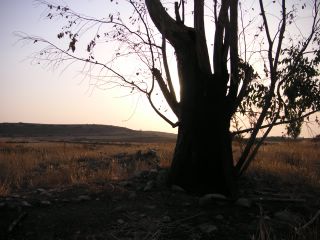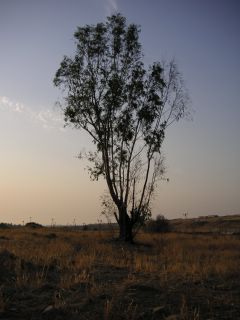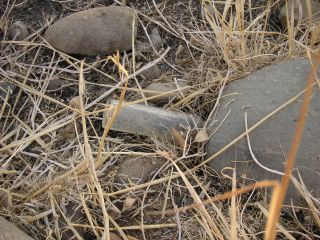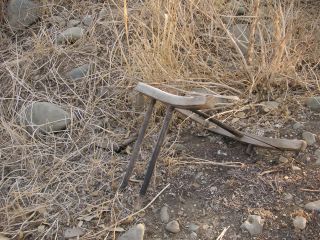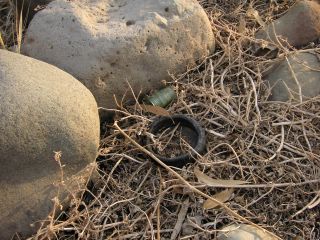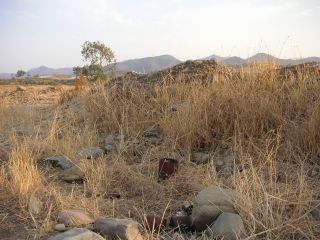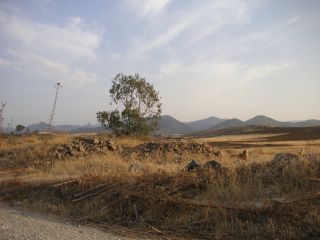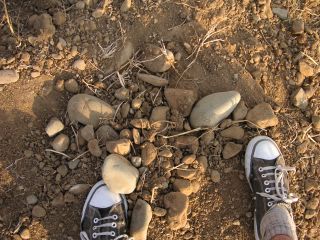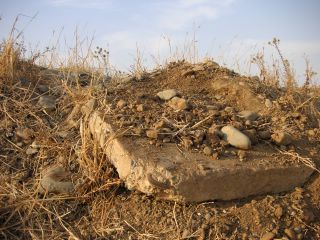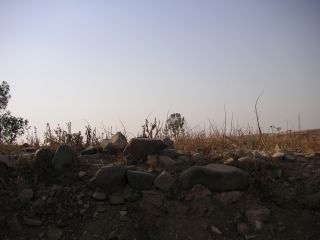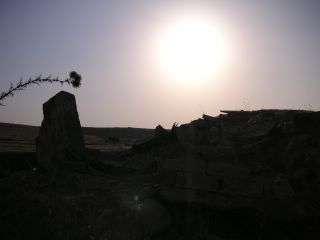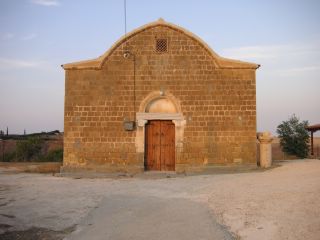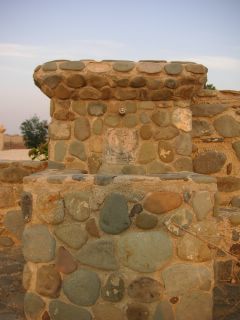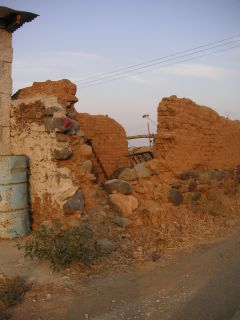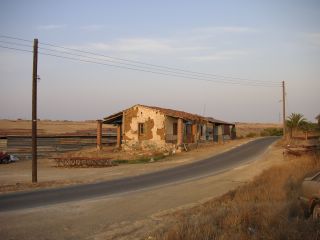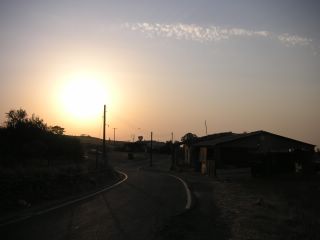I decided to officially archive this blog on the day my DPhil was confirmed. But I have waited for the electronic publication of my thesis, Interrogating Archaeological Ethics in Conflict Zones: Cultural Heritage Work in Cyprus, to announce the archiving. From now on, I will blog at Conflict Antiquities.
Saturday, August 27, 2011
Wednesday, December 16, 2009
Pano Koutraphas: abandoned village, destroyed
[Thanks to Dave S's comment on the Evretou photo blog, I will try to give each site photo blog a proper introduction; until then, I'll cross-post the introductory posts from Cultural Heritage in Conflict (or samarkeolog).]
When I was having the argument with other international archaeologists about the destruction of Ayios Epiphanios, Pano Koutraphas was mentioned in passing, to explain Ayios Epiphanios's location. Thinking I had been talking about Koutraphas, one admonished me, 'Pano Koutraphas wasn't bulldozed - it just fell apart'. I hadn't said that Pano Koutraphas had been destroyed, although it had and I knew it had. As I recorded in my notes (emphasis added):
It was arguments with other archaeologists about these places that made site inspection, documentation and presentation integral to my work. It would be great if these site blogs became arenas of discussion and debate, but, at the very least, they provide non-partisan, public documentation of some of the past history and current condition of the destroyed, abandoned villages like Pano Koutraphas, helping to establish their history and to challenge historical myths and lies.
Goodwin, J C. 1978: An historical toponymy of Cyprus. Nicosia: Jack C. Goodwin.
[This was originally posted on samarkeolog on 11th January 2007.]
[Thanks to Dave S's comment on the Evretou photo blog, I will try to give each site photo blog a proper introduction; until then, I'll cross-post the introductory posts from Cultural Heritage in Conflict (or samarkeolog).]
When I was having the argument with other international archaeologists about the destruction of Ayios Epiphanios, Pano Koutraphas was mentioned in passing, to explain Ayios Epiphanios's location. Thinking I had been talking about Koutraphas, one admonished me, 'Pano Koutraphas wasn't bulldozed - it just fell apart'. I hadn't said that Pano Koutraphas had been destroyed, although it had and I knew it had. As I recorded in my notes (emphasis added):
I clarified, 'I wasn't saying that Pano Koutraphas was bulldozed', then, half-unsure and half-unwilling to start a second argument and destroy my credibility, I "copped out", 'I know it just fell down.'Pano Koutraphas was a village of fifty Turkish Cypriots when the Troubles began (Goodwin, 1978: 459); now, apart from a few buildings visible towards the horizon, which could be part of other nearby settlements, Pano Koutraphas has been reduced to its foundations. Again, as I said in my notes:
When I copped out and concurred that ‘it just fell down’, I was made more aware, first, of just how easy compromising oneself and copping out is and, (self-servingly) second, of how the act of copping out may be professionally justified (or, perhaps, personally excused), as, had I insisted that Pano Koutraphas was bulldozed as well as Ayios Epiphanios, I believe I would have been utterly ignored.Apart from being iconic case studies of the treatment of Turkish Cypriot community cultural heritage in southern Cyprus, archaeologists' relationships with Ayios Epiphanios and Pano Koutraphas seem to me central to my examination of archaeologists' roles in conflicts.
It was arguments with other archaeologists about these places that made site inspection, documentation and presentation integral to my work. It would be great if these site blogs became arenas of discussion and debate, but, at the very least, they provide non-partisan, public documentation of some of the past history and current condition of the destroyed, abandoned villages like Pano Koutraphas, helping to establish their history and to challenge historical myths and lies.
Goodwin, J C. 1978: An historical toponymy of Cyprus. Nicosia: Jack C. Goodwin.
[This was originally posted on samarkeolog on 11th January 2007.]
Monday, January 08, 2007
There were too many alternative names and spellings to list them all in the description.
Kato Koutraphas is also known as Aşağı Kurtboğan, Kato Koutrafa, Kato Koutrafas, Kato Koutrapha, Kato Kutrafa, and Katokutrafa.
Pano Koutraphas is also known as Pano Koutrafa, Pano Koutrafas, Pano Koutrapha, Pano Koutraphas, Pano Kutrafa, Yukarı Kutrafa, Yukari Kutrafa, Yukarı Kurtboğan, Yukari Kurtbogan, Yukarıkutrafa, and Yukarikutrafa.
Other names for the villages include Cotrefoko, Cutrafa, Kotrephaki, Koutrafan, Koutrophas, and Kurtafa.
Kato Koutraphas is also known as Aşağı Kurtboğan, Kato Koutrafa, Kato Koutrafas, Kato Koutrapha, Kato Kutrafa, and Katokutrafa.
Pano Koutraphas is also known as Pano Koutrafa, Pano Koutrafas, Pano Koutrapha, Pano Koutraphas, Pano Kutrafa, Yukarı Kutrafa, Yukari Kutrafa, Yukarı Kurtboğan, Yukari Kurtbogan, Yukarıkutrafa, and Yukarikutrafa.
Other names for the villages include Cotrefoko, Cutrafa, Kotrephaki, Koutrafan, Koutrophas, and Kurtafa.
Subscribe to:
Comments (Atom)





